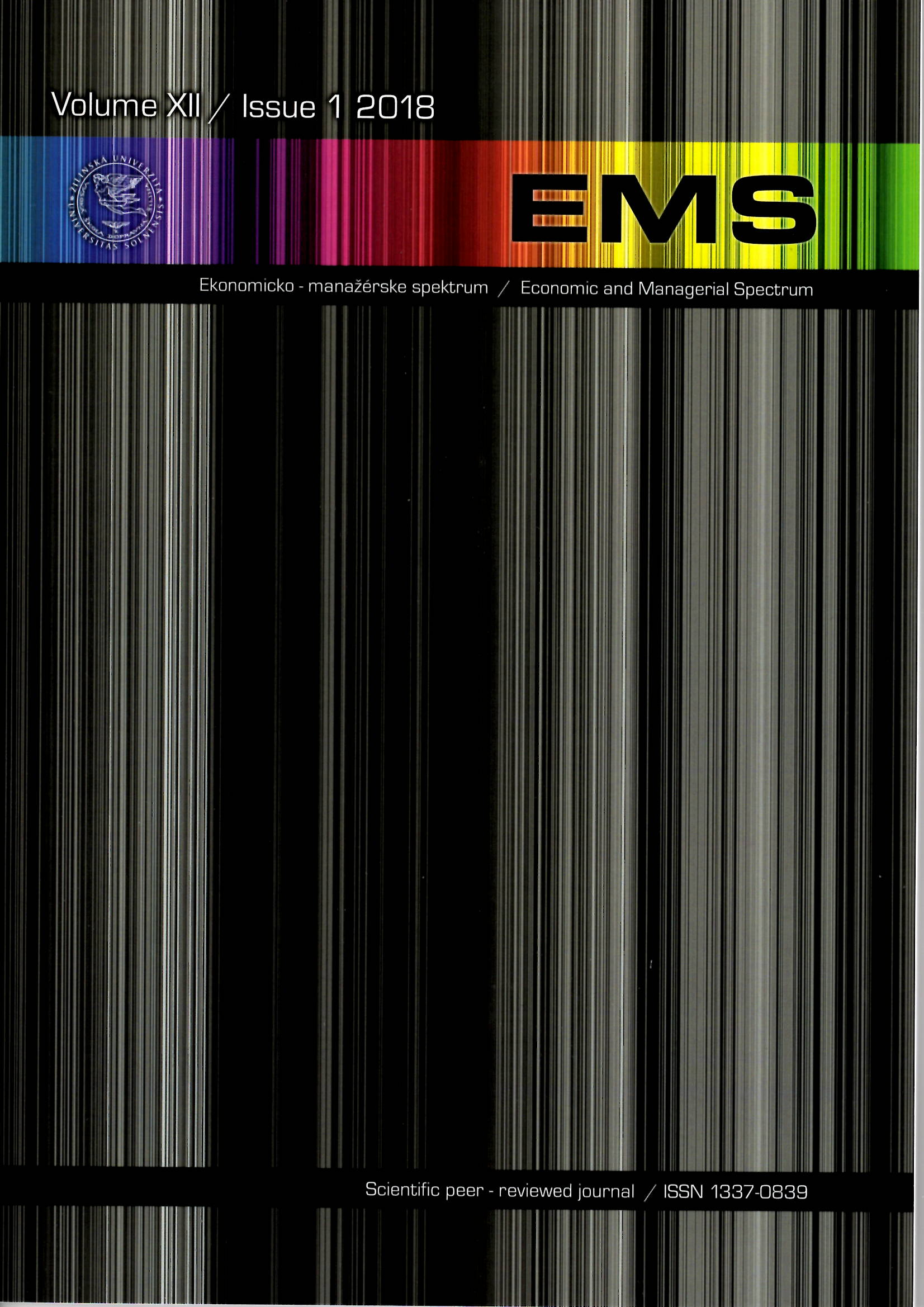PREDICTION MODEL OF FIRM´S
FINANCIAL DISTRESS
PREDICTION MODEL OF FIRM´S
FINANCIAL DISTRESS
Author(s): Lucia Svabova, Katarina Kramarova, Marek ĎuricaSubject(s): Business Economy / Management, Micro-Economics, Financial Markets, Accounting - Business Administration
Published by: Žilinska univerzita v Žiline, Fakulta prevádzky a ekonomiky dopravy a spojov, Katedra ekonomiky
Keywords: prediction of default; bankruptcy prediction models; financial distress; multivariate discriminant analysis;
Summary/Abstract: The issue of classification of firms and the construction of a predictive model of their financial distress has long been in the focus of the attention of economists and scientists indifferent countries around the world. Since the 30´s of the last century, they have been trying to create an economic model with a strong predictive ability or with a high degree of correct classification that, under the conditions of given country, could detect with a high level of reliability the financial distress or properly classify the company into a group of companies threatened by financial difficulties or bankruptcy. In case of Slovakia, the research of this areais being lacked. So far, some models have been presented to the professional public and, if it is necessary, it is rather preferred to use foreign prediction models. Their predictability, however,generally decreases under the conditions of the Slovak economy as they were created in another economic environment. Our model is based on the principles of the multivariate discriminant analysis, the first method of predicting bankruptcy. The presented model is relatively robust because it is based on real data from the financial statements of more than 30,000 enterprises for the year 2016 with the retrospective verification on data from the year 2015 and 2014. The model is generally applicable, it is not sector-oriented, and its discriminant function consists of financial indicators, which are clearly quantifiable. The model classifies enterprises as“prosperous” or as “unprosperous”, where prosperous firms are in a good financial condition,and on the other hand, unprosperous firms are in the financial crisis, or are close to the bankruptcy. The model´s primary objective is to identify a financial crisis correctly in order to adopt timely corrective actions by company´s managers and shareholders or as a warning sign for external entities.
Journal: Ekonomicko-manazerske spektrum
- Issue Year: 12/2018
- Issue No: 1
- Page Range: 16-29
- Page Count: 14
- Language: English

